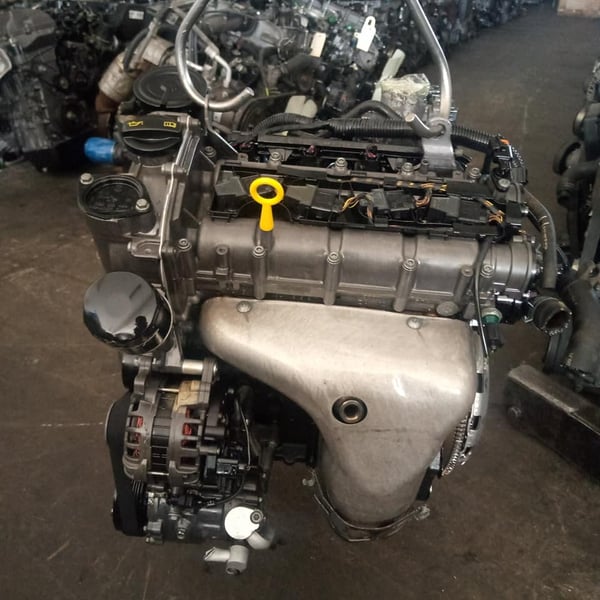Optimize fuel efficiency with a top-tier clp engine.
Optimize fuel efficiency with a top-tier clp engine.
Blog Article
Exactly How a Clp Engine Can Improve Performance in Various Industries
The advent of CLP engines marks a considerable change in functional efficiency across different markets, driven by their capacity to optimize fuel consumption and lessen downtime. As companies significantly focus on sustainability alongside efficiency, the function of CLP engines ends up being also more vital.
Summary of CLP Engines
CLP engines, or Continual Fluid Propellant engines, stand for a significant development in propulsion modern technology, specifically for space applications. These engines make use of a continual feed system that permits the sustained expulsion of propellant, leading to enhanced performance and efficiency compared to conventional solid or hybrid propulsion systems. By keeping a consistent flow of liquid propellant, CLP engines can accomplish much more precise drive control, which is critical for navigating spacecraft in different mission situations.
The layout of CLP engines integrates sophisticated products and cutting-edge fuel administration systems. clp engine. This causes minimized weight and enhanced integrity, necessary elements for long-duration room goals. Moreover, the continuous procedure minimizes the threat of combustion instability, an usual challenge in standard rocket engines.

Advantages in Production
The production of Continual Fluid Propellant (CLP) engines presents several noteworthy advantages that enhance both efficiency and cost-effectiveness. One of the primary benefits is the structured manufacturing procedure, which lowers the intricacy linked with traditional propulsion systems. By utilizing fluid propellant, manufacturers can achieve greater precision in engine performance, bring about maximized power outcome and minimized waste.
Furthermore, CLP engines assist in a higher degree of modularity, enabling much easier assimilation right into various production lines. This versatility can substantially reduce lead times and boost general functional versatility. The use of CLP modern technology likewise tends to decrease the requirement for comprehensive upkeep because of less moving components, which equates into minimized downtime and functional expenses.

Applications in Logistics
Leveraging Continual Fluid Propellant (CLP) engines in logistics offers significant advantages in operational effectiveness and integrity. These engines give a robust remedy for numerous transportation needs, enabling the seamless movement of items throughout substantial ranges. The intrinsic style of CLP engines enables for constant power result, which converts right into smoother and more foreseeable transport routines.
One of the key applications of CLP engines in logistics remains in sturdy freight transport, where they can drive both ground and aerial lorries. Their capacity to preserve high performance under varying lots problems makes sure that delivery timelines are met, therefore boosting client fulfillment. Furthermore, CLP engines can be integrated right into automated logistics systems, promoting real-time tracking and optimizing course planning.
Moreover, the sturdiness of CLP engines decreases upkeep downtime, enabling logistics companies to optimize their operational capabilities. This is specifically valuable in warehousing operations, where efficiency in taking care of and carrying goods is essential. As logistics remains to develop, the integration of CLP engines stands for a forward-thinking method that not only enhances performance yet also sustains the industry's expanding needs for dependability and rate.
Influence On Power Effectiveness
Just How do Continuous Fluid Propellant (CLP) engines enhance energy performance in transportation? CLP engines make use of a consistent Read More Here circulation of liquid gas, enhancing burning processes and preserving a stable thrust result. This design lessens energy losses connected with traditional combustion engines, where gas distribution can vary and bring about inefficiencies.
The constant procedure of CLP engines allows for an extra reliable thermal cycle, resulting in higher details impulse compared to you can try here conventional engines. clp engine. This equates to lowered fuel consumption for the exact same quantity of work done, considerably decreasing operational expenses throughout different transport fields, including aeronautics and maritime industries
Additionally, the ability of CLP engines to maintain optimum efficiency under differing tons problems minimizes the need for constant velocity and deceleration, further boosting fuel efficiency. Enhanced energy performance not just adds to set you back savings however additionally causes decrease greenhouse gas exhausts, aligning with worldwide sustainability goals.
Future Trends and Innovations
Arising innovations in Continuous Liquid Propellant (CLP) engine technology promise to transform the landscape of transportation effectiveness and sustainability. As sectors pivot towards greener alternatives, CLP engines stand at the forefront, integrating innovative products and layout techniques that boost performance while decreasing ecological effect.
One of one of the most encouraging fads is the fostering of hybrid systems that combine CLP engines with eco-friendly energy sources. This harmony can enhance fuel intake and minimize emissions, straightening with worldwide sustainability goals. Moreover, innovations in computational fluid dynamics (CFD) are promoting the style of more aerodynamically reliable engines, causing reduced drag and boosted fuel performance.
Moreover, the advancement of clever tracking systems is readied to improve functional effectiveness. These systems utilize data analytics and IoT modern technology to enhance engine efficiency in real-time, making sure that the engines operate within their most reliable specifications.
As study remains to check out alternative propellant solutions-- such as biofuels and artificial fuels-- the future of CLP engines looks encouraging. By taking advantage of these innovations, markets site web can not only boost their efficiency yet likewise add substantially to a cleaner, more lasting future in transportation.
Conclusion
Finally, CLP engines represent a substantial development in performance across several sectors. Their ability to enhance gas intake and minimize functional costs, combined with a constant feed system, boosts power result and operational integrity. The assimilation of advanced materials and less relocating parts lessens maintenance demands, while placement with sustainability goals settings CLP engines as a crucial technology for the future. Proceeded technology in this field guarantees further renovations in effectiveness and environmental performance.
Report this page